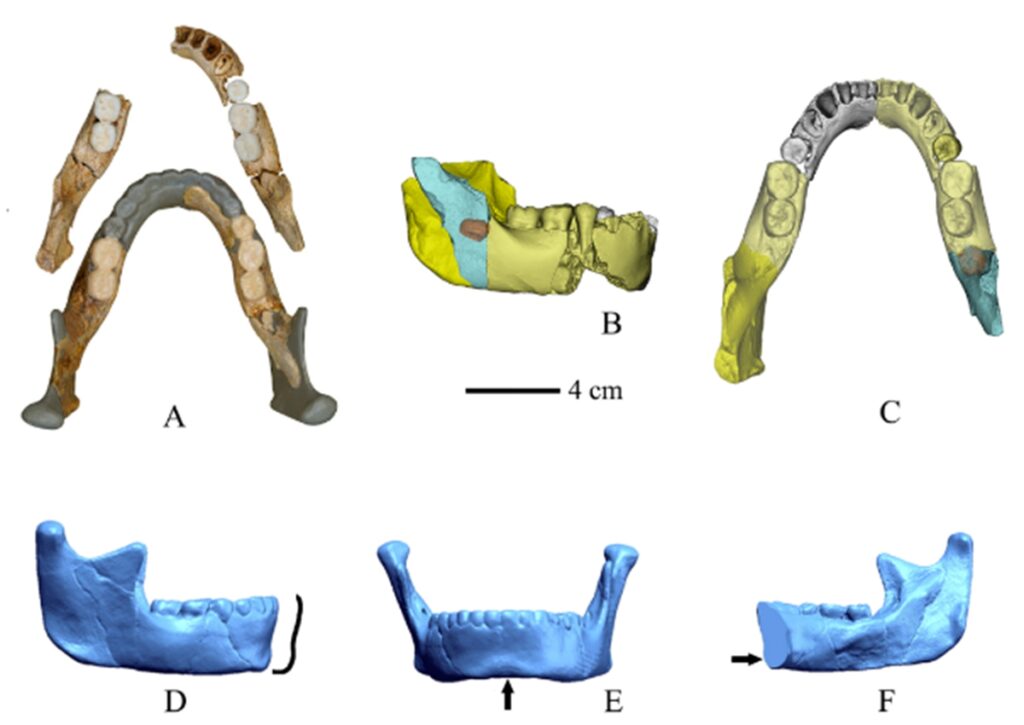An international team of researchers has, for the first time, found a human fossil in eastern China exhibiting mosaic morphological features of early modern humans, which provides further support for the variability of hominins dating back about 300,000 years in East Asia, according to a recent report from the Institute of Vertebrate Paleontology and Paleoanthropology (IVPP) of the Chinese Academy of Sciences.
The Hualongdong site, located in Dongzhi county, East China’s Anhui Province, has yielded human fossils such as a nearly complete mandible as well as a partial cranium. The two together were labeled as Hualongdong 6 (HLD 6).
HLD 6 “exhibits a mosaic morphological pattern characterized by a robust corpus and relatively gracile symphysis and ramus,” according to the research paper entitled “Morphological and morphometric analyses of a late Middle Pleistocene hominin mandible from Hualongdong, China” published in the prestigious scientific publication Journal of Human Evolution.
“The moderately developed mental trigone and a clear anterior mandibular incurvation of the HLD 6 mandible are reminiscent of Late Pleistocene hominin and recent modern human morphology,” reads the paper. However, the weak expression of all these features indicates that this mandible does not possess a true “chin.”
Besides this, the HLD 6 mandible also exhibits archaic features resembling those of Middle Pleistocene hominins, including “a pronounced alveolar planum, superior transverse torus, thick corpus, a pronounced endocondyloid crest, and a well-developed medial pterygoid tubercle.”
This combination of the features has never been recorded in late Middle Pleistocene hominin fossil assemblages in East Asia, the paper reveals.
“The HLD 6 mandible provides further support for the high morphological diversity during late Middle Pleistocene hominin evolution. With these findings, it is possible that modern human morphologies are present as early as 300 ka and earlier than the emergence of modern humans in East Asia,” the paper says.
The collaborative research was conducted by researchers from IVPP, Xi’an Jiaotong University, and the Spanish National Research Center for Human Evolution.
Since 2013, researchers have conducted continuous investigations and excavations at the Hualongdong site, uncovering more than 30 ancient human fossils, including a relatively complete skull fossil. In addition, hundreds of stone tools, a plethora of mammal fossils, and animal bone fossils bearing cut marks and signs of butchery have been discovered, providing various evidence of ancient human activity.
The determined age of the human fossils at the site falls between 275,000 and 331,000 years ago. This is the second site of late Pleistocene human fossils with the richest number of human fossils containing evidence of human activity, such as stone tool usage, found in China after the Zhoukoudian fossil site in suburban Beijing.
(Global Times)




